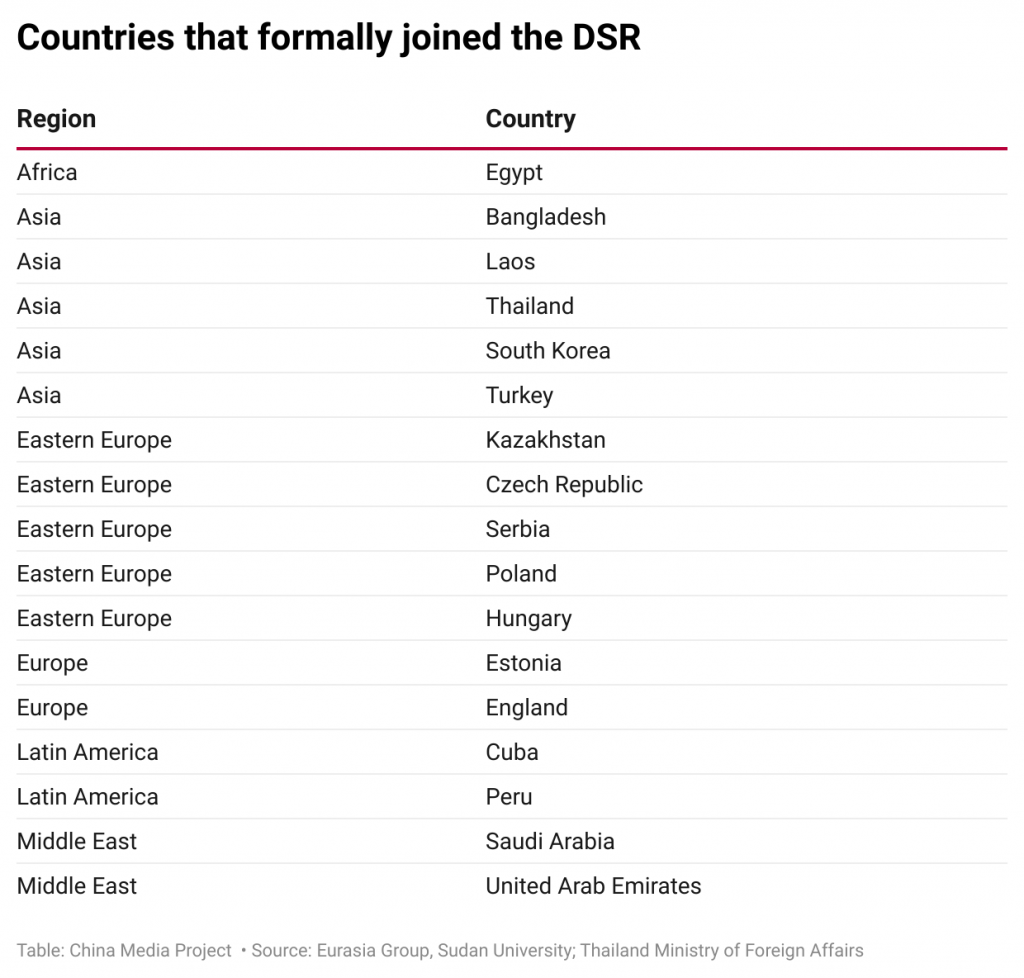The term Digital Silk Road began appearing frequently in state media and government documents after a 2017 speech by President Xi Jinping — but before that, the scaffolding for this concept had already been erected. Two years earlier, the National Development and Reform Commission released a paper on the Belt and Road Initiative (BRI) and its two main components: the Silk Road Economic Belt and the 21st Century Maritime Silk Road. One of the core ideas behind these two pillars was the interconnection of infrastructure, both physical and digital. The only way to make this possible was by developing a “new generation of information technology” (新一代信息技术), or NGIT, that was tailor-made for the People’s Republic of China and did not conform to Western standards — a priority first outlined in China’s 12th Five-Year Plan (2011-2015).
Beginning with the 6th China-UK Internet Roundtable in October 2015, “Digital Silk Road” became more prevalent within China’s official discourse. Several months later, in March 2016, the State Council published its 3rd Five-Year Plan for National Informatization, which included a section on building an “Online Silk Road” and an “Information Port” linking China and the Association of Southeast Asian Nations (ASEAN). This was designed as a bundle of connectivity projects running over the border from southern and southwestern China to ASEAN member states. The next year, Xi Jinping formally introduced his DSR strategy at the opening of the Belt and Road Forum in Beijing, underscoring the critical need to create a “Digital Silk Road of the 21st Century.” Xi called for the consolidation of an Internet of Things (IoT) that included the digital economy, artificial intelligence, nanotechnology, and quantum computing. He also urged the development of big data, cloud computing, and smart city technology. Since then, the idea that China has to enhance its role in the international sphere through connectivity projects has become a pillar of Xi’s foreign policy.
A Cyberspace with Chinese Characteristics
The DSR is perhaps best described in an article for People’s Daily Online as a “globalization bridge” (全球化桥梁). The implication here is that the PRC can not only build strong global links but can also be a reliable partner that other nations can trust to connect them with the wider world. States that have formally or informally taken part in the initiative run the gamut from Hungary to Senegal, the United Kingdom, and Cambodia, and while Beijing does not publish an official tally of DSR partners, reports from the state broadcaster CCTV and other official media this year suggest at least 17 countries have signed Memoranda of Understanding to formally join the DSR.

The project poses an alternative — particularly for developing nations — to the United Nations’ Sustainable Development Goals and the EU’s more recently launched Global Gateway, a scheme that invests in physical and digital infrastructure worldwide but has already proven to be inefficient in developing countries. Most states that decide to sign onto the DSR have already been exposed to Beijing’s influence through the BRI, so it presents as a logical next move — but one that could also result in even greater dependency on China. In Senegal, for instance, most data centers are now built and operated by Chinese enterprises, enabling these companies to update infrastructure with their own standards and systems.
Precisely what activities fall under the umbrella of the DSR has not been officially disclosed, but all known projects work to integrate the hard and soft infrastructures underpinning next-generation IoT capabilities. Examples include 5G antenna and base stations, fiber optic cables, data centers, smart city initiatives, and e-commerce platforms. Across the board, Beijing has encouraged tech companies to deepen cooperation with recipient countries. Some of the flagship companies that have joined the project are state-owned enterprises such as China Telecom and Unicom, as well as ostensibly private operators like China Mobile, Huawei, ZTE, and Dahua. The common denominator among these actors is a commitment to consolidating China’s presence in emerging markets and developing economies.
Over the past decade, Beijing has been able to build a parallel technological ecosystem that challenges Western-dominated norms. While this Initiative has the potential to enhance digital connectivity in developing economies, it also provides Beijing with a mechanism that can be used both to test its surveillance technology in third countries and to train these countries’ leaders on how to leverage the information that they collect. In a 2018 report, Freedom House cited a seminar on “Cyberspace Management for Officials from Countries Along the Belt and Road Initiative” that was repeated this year. It saw foreign officials visit the offices of a Chinese company that uses a big data toolkit to track negative public sentiment in real time and promote positive opinions of the government.
This style of surveillance and public opinion “guidance” is consistent with some of the other projects DSR sponsors have exported to third countries. In Venezuela, for example, PRC tech giant ZTE has been closely working with authorities to develop a system that can monitor citizens and, most importantly, their voting preferences.

Dalia Parete
The CMP Dictionary
C
D
F
G
M
N
P
S
- Scaling the Wall
- Science
- Second-Generation Reds
- Security
- Seeking Progress in Stability
- Seeking Truth From Facts
- Self-Revolution
- Seven Bottom Lines
- Six Adheres
- Smart Governance
- Sneaky Visit
- So-Called
- Socialite
- Soft Resistance
- Soul and Root
- Soundless Saturation / Quietly Nourishing
- Sovereignty
- Speaking Politics
- Streamlining Services
- Strong Cyber Power

